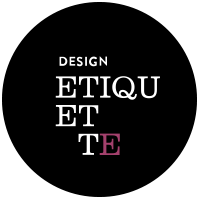You have to learn the rules of the game. And then you have to play better than anyone else.
Albert Einstein
Your logo. Your flag.
— Your logo. Your flag. — Your logo. Your flag.
Creativity, Brand Strategy
I can’t remember how often clients have asked us to design a logo representing their brand values, history, niche, customers, believes, and strategy. Wait! What? No.
First, let’s start with the definition and function of a logo: A logo is a graphic element, symbol, or emblem used to identify a company, organization, or brand.
Is it possible to enclose all your brand information in this simple graphic? The answer is no. Instead, I try to explain to our clients that they should think of their logo as a country’s flag. And let me explain this analogy:
Pick a country, any country. Say, Costa Rica. Its flag has a simple blue, white and red stripe combo (similar to Thailand’s, but inverted). If you’ve never seen our flag, you won’t know what you are looking at. But if you have, you probably have an image associated with it: Nature, “Pura Vida”, Coffee, Keylor Navas, Gallo Pinto, Peace. All your associations go hand in hand with your life experiences and personal preferences.
The same thing happens with your logo. When people first see it, they are just going to see graphic elements (whether simple or complex, monochromatic or colorful). As people start interacting with your business, your logo takes on new meanings: great brand, good service, interesting company values, inspiring brand story. Your brand identity and marketing can give your customers an idea of what to expect from your product or service, but your logo alone, which is probably the first thing they interact with, can’t. If your business was a country, your logo is its flag.
Your secretary yelled at your client? Does your latest flavored frappuccino taste like kombucha? Did your flight attendant kick a passenger out of their flight? Many big brands have had a customer experience gone so bad and viral, that they’ve turned their logos into the equivalent of House Bolton’s sigil, making everyone run in the opposite direction when they see it. If you are not on top of your game, your logo could start having negative connotations: lousy customer service, cheap products, and unacceptable business policies. This is why it’s important to craft every aspect of your brand so that, in time, the associations that people have when seeing your logo, are good. Hopefully great.
So start thinking about your logo as your business flag, and start analyzing the associations people have about your brand when they see it. By doing this, you’ll find ways to improve your business and help your customers better. Your brand value, after all, is what they make of it.
